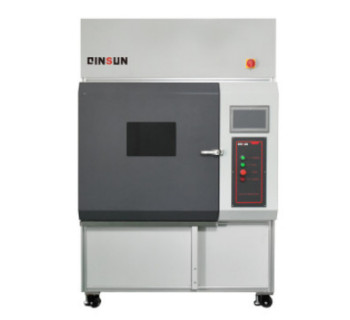Why choose Xenon lamp aging test chamber for material aging
Materials are prone to aging in various environments, and the aging of various products causes hundreds of millions of dollars in economic losses every year. The material damage caused mainly includes: discoloration, loss of gloss, strength reduction, cracking, peeling, chalking and oxidation. The main factors that cause material aging are light (especially ultraviolet light), high temperature, and humid conditions such as rain, dew, and high humidity. Light and humidity tend to have a synergistic effect. Some materials have good durability under the sole action of light or moisture, but they tend to fail under the synergistic effect of light and moisture. Xenon lamp aging tester is an experimental instrument for material aging test. Standard Group (Hong Kong) Co., Ltd. can provide it. Customers in need are welcome to inquire. Why is a xenon lamp aging tester usually used for material aging testing? The answer is that humidity and relative humidity are the key parameters for many material tests, and the xenon lamp aging box has water spray and relative humidity control functions.
1. Moisture simulation
The xenon lamp aging box simulates the main factors that cause material aging to be sunlight and humidity. The weather resistance testing machine can simulate the damage caused by sunlight, rain and dew. Xenon lamp aging test machine uses xenon lamp to simulate the effect of sunlight, and uses condensed moisture to simulate rain and dew. The tested material is placed in a cycle program of alternating light and moisture at a certain temperature for testing. It takes several days or weeks. It can reproduce the hazards that occur outdoors for months or even years. The artificial accelerated aging test data can help select new materials, improve existing materials, and evaluate how changes in formula affect product durability.
2. Relative humidity control
Many models of Xenon Arc Weatherometer have a relative humidity control function. When materials are subjected to physical stress, they try to maintain a humidity balance with the surrounding environment. At this time, the relative humidity affects the degradation of the material. Relative humidity also affects the speed of sample drying. The water spray of the xenon lamp aging box uses pure water to spray directly to simulate the influence of outdoor moisture erosion. Water spray can be set in light or dark cycle. In addition to oxidizing, water spray can also cause thermal shock and/or mechanical corrosion.
The spectrum generated by the Xenon Arc Weatherometer is filtered to reduce unnecessary spectral components. Different types of glass filters can be used to obtain different spectra. Three types of filters that are commonly used are defined in ASTM G155: daylight, window glass, and UV stretch filters.
There are several different types of daylight, window glass, and UV extension filters. Most Xenon Arc Weatherometers use water spray or humidity control systems to simulate the effects of humidity. The limitation of the water spray is that when the lower temperature water is sprayed on the higher temperature test sample, the temperature of the sample will also decrease, which may slow down the rate of aging. However, water spray is quite good at simulating thermal shock and mechanical erosion.


